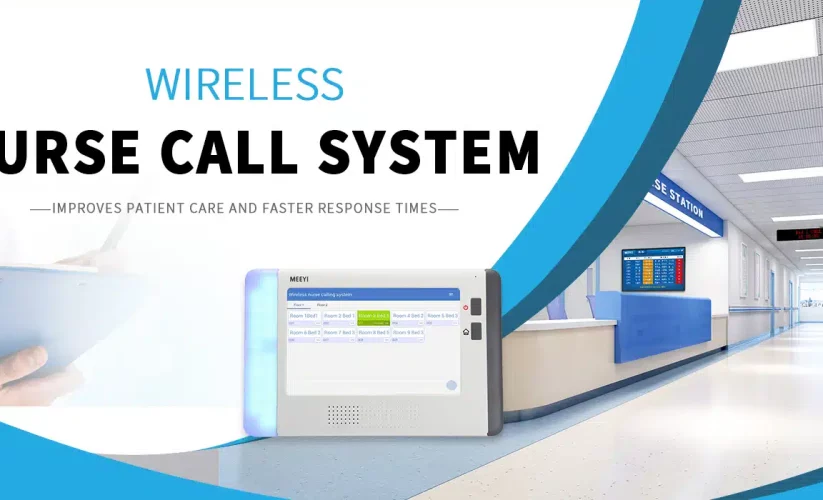
Essential Guide to Wireless Nurse Call Solutions for Hospitals
In the modern healthcare environment, effective communication is critical for delivering high-quality patient care. One of the most significant advancements in hospital communication technology is the wireless nurse call system for hospitals. These systems enhance the ability of patients to communicate their needs to healthcare providers, improving response times and overall patient satisfaction. This essential guide will explore the key components, benefits, features, and best practices for implementing wireless nurse call solutions in hospitals.
Understanding Wireless Nurse Call Systems
A wireless nurse call system is a communication tool that allows patients to alert nurses and healthcare staff when they require assistance. Unlike traditional wired systems, which can be cumbersome and limited in functionality, wireless systems utilize radio frequency or Wi-Fi technology to transmit alerts in real time. This technology fosters seamless communication between patients and healthcare providers, ultimately enhancing the patient experience.
Key Components of Wireless Nurse Call Systems
- Patient Call Buttons: The most fundamental component, these buttons allow patients to request help easily. Designed for accessibility, they are typically placed within easy reach of the patient, ensuring that assistance is only a press away.
- Wireless Transmitters: When a patient presses the call button, a wireless transmitter sends an alert to the nursing station or to the mobile devices of on-duty staff. This ensures that the request for assistance is communicated instantly.
- Mobile Devices: To enhance responsiveness, many systems enable alerts to be sent directly to nurses’ smartphones or tablets. This mobility allows healthcare providers to address patient needs promptly, even when they are not stationed at a central desk.
- Centralized Monitoring Stations: These stations compile and display all patient alerts in real time, allowing staff to manage requests efficiently. This centralized approach streamlines communication and helps prioritize responses based on urgency.
- Integration Features: Modern wireless nurse call systems can integrate with other hospital technologies, such as electronic health records (EHR) and patient management systems, further enhancing the quality of care.
Benefits of Wireless Nurse Call Systems
1. Improved Patient Satisfaction
The ability for patients to communicate their needs quickly and efficiently significantly enhances their overall experience. When patients feel heard and attended to promptly, their satisfaction levels increase, leading to a more positive hospital stay.
2. Faster Response Times
Wireless nurse call systems enable healthcare staff to respond to patient requests instantly. The real-time alerts provided by these systems help reduce wait times, which is particularly crucial in emergency situations. Quick responses can lead to better outcomes, especially for patients in critical condition.
3. Enhanced Safety
With a wireless nurse call system, patients can alert staff to emergencies immediately, which enhances overall patient safety. This capability is especially important for patients who may be at risk of falls or other medical emergencies, providing peace of mind to both patients and their families.
4. Increased Efficiency
Healthcare providers can optimize their workflow with wireless systems. By receiving alerts on mobile devices, nurses can manage multiple patients more effectively, allowing for better time management and improved overall efficiency within the hospital.
5. Data Collection and Analytics
Many modern wireless nurse call systems come equipped with data collection capabilities. Hospitals can analyze metrics such as response times, call frequencies, and patient interactions. This data-driven approach allows for informed decision-making and continuous improvement in patient care processes.
Essential Features of Wireless Nurse Call Solutions
1. Customizable Alerts
Wireless nurse call systems should offer customizable alerts that cater to the unique needs of different departments or individual patients. This customization allows hospitals to prioritize urgent requests and ensure that the right personnel respond to each call.
2. Emergency Alert Features
A robust wireless nurse call system should include emergency alert features that allow patients to notify staff of urgent situations. This capability ensures that healthcare providers can respond promptly to critical incidents, enhancing patient safety.
3. Integration with Hospital Systems
Integration with other hospital technologies, such as EHR and patient management systems, enhances the functionality of wireless nurse call systems. This integration allows staff to access pertinent patient information while responding to alerts, facilitating better care.
4. Mobile Compatibility
Mobile compatibility is essential for modern healthcare environments. Wireless nurse call systems that send alerts to staff mobile devices enable nurses to respond quickly, regardless of their location within the hospital.
5. User-Friendly Interface
A user-friendly interface is crucial for both patients and staff. The system should be intuitive, allowing patients to use it easily and ensuring that healthcare providers can navigate alerts and notifications efficiently.
Best Practices for Implementing Wireless Nurse Call Systems
1. Assess Hospital Needs
Before selecting a wireless nurse call system, conduct a thorough assessment of your hospital’s specific needs. Engage staff members across different departments to gather insights on their preferences and the challenges they currently face with existing communication methods.
2. Choose the Right Solution
Select a wireless nurse call system that aligns with your hospital’s requirements. Consider factors such as ease of use, scalability, and integration capabilities. Ensure that the chosen system can adapt to your hospital’s evolving needs.
3. Provide Comprehensive Training
Once the system is implemented, provide comprehensive training for all staff members. Ensure that they understand how to use the system effectively and are aware of its features. Ongoing support should also be available to address any questions or challenges that arise.
4. Encourage Feedback
Encourage feedback from both staff and patients regarding the wireless nurse call system. Use this feedback to make necessary adjustments and improvements, ensuring the system remains relevant and valuable for enhancing patient care.
5. Monitor and Evaluate
Regularly monitor the performance of the wireless nurse call system and evaluate its impact on patient care and staff efficiency. Use data analytics to track response times and identify areas for improvement, ensuring that the system evolves with the hospital’s needs.
Conclusion
The implementation of a wireless nurse call system for hospitals is essential for enhancing communication, improving patient satisfaction, and ensuring timely responses to patient needs. By understanding the key components, benefits, and best practices for these systems, hospitals can create a more efficient and responsive healthcare environment. Investing in effective wireless nurse call solutions not only enhances patient experiences but also contributes to better health outcomes and overall operational efficiency.





